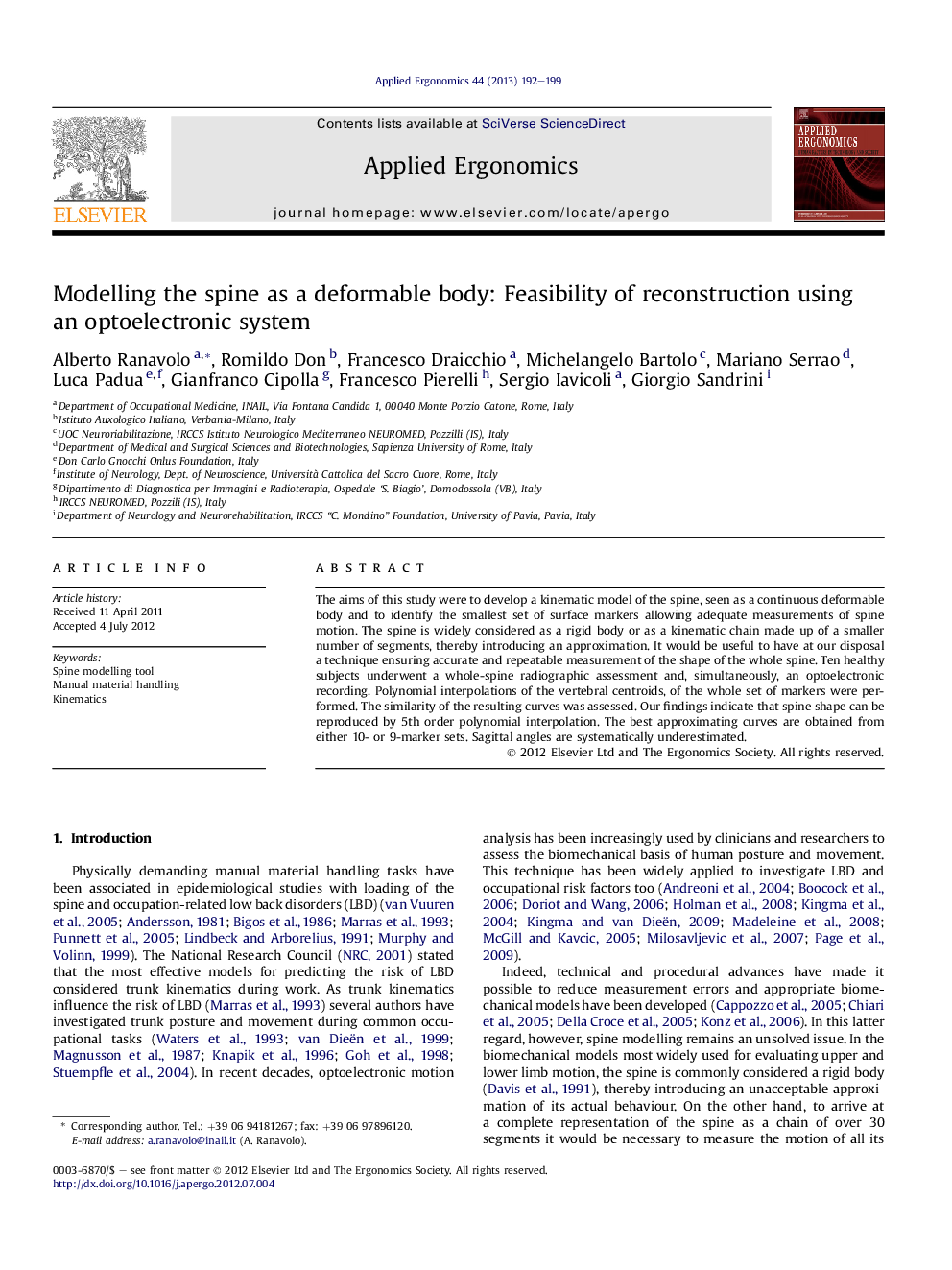| Article ID | Journal | Published Year | Pages | File Type |
|---|---|---|---|---|
| 548712 | Applied Ergonomics | 2013 | 8 Pages |
The aims of this study were to develop a kinematic model of the spine, seen as a continuous deformable body and to identify the smallest set of surface markers allowing adequate measurements of spine motion. The spine is widely considered as a rigid body or as a kinematic chain made up of a smaller number of segments, thereby introducing an approximation. It would be useful to have at our disposal a technique ensuring accurate and repeatable measurement of the shape of the whole spine. Ten healthy subjects underwent a whole-spine radiographic assessment and, simultaneously, an optoelectronic recording. Polynomial interpolations of the vertebral centroids, of the whole set of markers were performed. The similarity of the resulting curves was assessed. Our findings indicate that spine shape can be reproduced by 5th order polynomial interpolation. The best approximating curves are obtained from either 10- or 9-marker sets. Sagittal angles are systematically underestimated.
► The shape of the spine can be reproduced accurately using a 5th order polynomial. ► The surface of the back can be used, to furnish data on spine shape. ► A small set of surface markers is adequate for calculating spine shape and curvatures.
